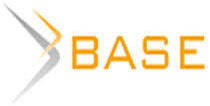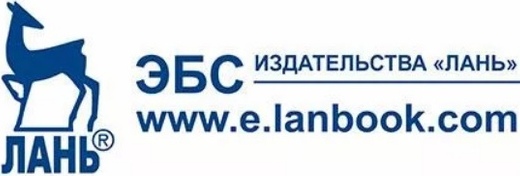Consumer loyalty: a critical analysis of approaches towards definition
Consumer loyalty is a key factor determining the ability of a brand to bring stable and long-term income to its owner. For this reason, firms pay great attention to the formation of customer loyalty. However, despite the widespread use of the term "loyalty" in the scientific and applied literature on marketing, there is no single definition of this term. At the same time, it is obvious that effective loyalty management is possible only if the firm clearly understands the essence of this phenomenon. Thus, it is of great importance to study existing approaches to understanding the nature of customer loyalty. The purpose of this work is to generalize the analysis of literary sources of foreign and domestic authors, revealing the essence of the concept of "consumer loyalty", its formation and significance in the implementation of the loyalty program. To achieve this goal, we conducted a review of the literature on the topic of consumer loyalty. The database of sources was formed from articles presented in the scientometric database Scopus (Scopus.com), as well as from articles in journals included in the core of the RSCI (the search was conducted on the database Elibrary.ru). In addition, additional articles from other Russian-language journals were included, corresponding to the subject. We used the method of unsystematic (descriptive) literature review. As part of the research, we used a general scientific method of analysis and synthesis. Tabular and graphical methods were used to represent and structure information. Our research of sources allowed us to distinguish the concepts of satisfaction, loyalty and engagement, as well as formulate the author's definition of loyalty, which can further serve as a theoretical basis for the development of loyalty management tools.
Kirillova, T. V., Zyk, E. A. (2023), “Consumer loyalty: a critical analysis of approaches towards definition”, Research Result. Business and Service Technologies, 9 (2), pp. 76-89, DOI: 10.18413/2408-9346-2023-9-2-0-7
















While nobody left any comments to this publication.
You can be first.
Aaker, D. and Joachimsthaler, E. (2014), Brand Leadership: The Next Level of the Brand Revolution, Free Press, New York.
Andreeva, M. A. and Kirillova, T. V. (2017), “Analysis of the Ways of Forming Consumer Loyalty as a Strategic Direction of Marketing of OJSC "TD CUM", Proc. of the International scientific and practical conference “Organization and management of business processes in the field of commercialactivities”, Federal State Autonomous Educational Institution of Higher Education "Peter the Great St. Petersburg Polytechnic University", Saint Peterburg, Russia, рр. 22-28.
Andreeva, M. A. and Kirillova, T. V. (2017), “Features of customer loyalty management in luxury department stores”, Proc. of the International scientific and practical conference “Organization and management of business processes in the field of commercial activities”, Federal State Autonomous Educational Institution of Higher Education "Peter the Great St. Petersburg Polytechnic University", Saint Peterburg, Russia, pp. 17-22.
Apatova, A. V. (2021), “Customer engagement in value co-creation”, Proc. 4th International conference “Business management in the digital economy”, Saint Peterburg, Russia, pp. 169-173.
Arenkov, I. A., Arakelova, I. V. and Kachalov, D. L. (2018), “From traditional loyalty to customer experience management and digital models”, Risk: resursy, informaciya, snabzhenie, konkurenciya, 4, pp. 187-192.
Baharev, V. V., Kapustina, I. V., Mityashin, G. Y. and Katrashova Y. V “Greening Retail: An Analysis of Strategies”, Siberian Journal of Life Sciences and Agriculture, 2020, 12, 5, pp. 79-96.
Beuder, J. (2013), Four Core Principles of Retail Customer Loyalty and Retention, Corner expert, 8, pp. 5–9.
Blanshar, K., Billard, Dzh. and Finch, F. Kak dobitsya loyalnosti klientov v sfere uslug [How to achieve customer loyalty in the service industry], Eksmo, Moscow, Russia.
Blehkuehll, R., Miniard, P. and Ehndzhel, Dzh. (2007), Povedenie potrebitelej [Consumer behavior], Piter, Saint Peterburg, Russia.
Bocman, K. O. and Shatilova, A. V. (2015), “Consumer loyalty: essence and importance for the company”, Sovremennaya nauka: aktualnye problem teorii i praktiki, 3(4), pp. 8-11.
Boldyreva, T. V. (2018), “Digital-marketing as a tool for the competitive advantage of the company of the future”, Nauka i obshchestvo, 2 (31), pp. 4-9.
Bondarenko, V. A. and Molod, A. S. (2015), “Satisfaction and customer loyalty: what is enough for a company in the local market?”, Prakticheskij marketing, 7 (221), pp. 33-40.
Bozhuk, S. G. and Pletneva, N. A. (2017), “The influence of environmental and social initiative companies on the formation of consumer loyalty”, Prakticheskij marketing, 2 (1), pp. 11-18.
Cunningham R.M. (1956), “Brand loyalty-what, where, how much?”, Harvard Business Review, 34, pp. 118.
Danko, T. P. (2001), Uchebnik po marketingu [Marketing textbook], INFRA, Moscow, Russia.
Dovganyova, Y. A., Nazarova, E. A. and Lytneva, L. E. (2022), “Increasing the loyalty of marketplace consumers in a turbulent environment”, Fundamentalnye i rikladnye issledovaniya v oblasti upravleniya, ehkonomiki i torgovli, 4, pp. 40-44.
Gembl, P., Stoun, M. and Vudkok, N. (2002), Marketing vzaimootnoshenij s potrebitelem [Consumer relationship marketing], FAIR-PRESS, Moscow, Russia.
Halturina, E. N. (2022), “The mechanism of formation and development of consumer loyalty”, Upravlencheskij uchet, 8(1), pp. 132-142.
Harmeling, C.M., Moffett, J.W., Arnold, M.J. and Carlson, B.D. (2017), “Toward a theory of customer engagement marketing”, Journal of the Academy of Marketing Science, 45, pp. 312–335.
Ignateva, O. V. and Novenkova, A. Z. (2013), “Increasing brand loyalty as a way to increase the company's competitiveness”, Izvestiya Yugo-Zapadnogo gosudarstvennogo universiteta. Seriya: ehkonomika, sociologiya, menedzhment, 3, pp. 101–104.
Ivolga, A. G. and Lesova, K. (2022), “The phenomenon of consumer loyalty in the hospitality industry”, Servis v Rossii i za rubezhom, 16, 5 (102), pp. 149-156.
Jacoby, J. and Chestnut, R. W. (2017), Brand Loyalty: Measurement and Management, Wiley, New York.
Jaworski, B. and Kohli, A. K. (2013), “Market orientation: Antecedents and consequences”, Journal of Marketing, 57 (July), pp. 53–70.
Kachanova, T. S. (2010), “Buyer preference factors and complex loyalty”, Prakticheskij-marketing, 3(157), pp. 17-21.
Kirillova, K. V. (2013), “To the question of quantitative assessment of the level of consumer loyalty”, Prakticheskij marketing, 10, pp. 30-35.
Kotliarov, I. D. (2010). “Loyalty and repeating purchases”, Marketing i marketingovye issledovaniya, 6, pp. 480-486
Kotliarov, I. D. (2013), “Ecosystem: new ways for a company to interact with employees, customers and the general public”, Vestnik NGUEU, 4, pp. 54-68.
Kotliarov, I. D. (2022), “The accumulation of intangible capital: a new era in the development of capitalism”, Proc. 4th International scientific conference “Social reality of virtual space”, Irkutsk State University, Irkutsk, Russia, pp. 363-366.
Kovalev V. E., Novikova K. S. and Antineskul E. A. (2022), “Efficiency of customer loyalty programmes in the food retail industry”, Journal of New Economy, 23 (4), pp. 121–136.
Nesset, E., Bergem, O., Nervik, B., Sorlie, E.S. and Helgesen, O. (2021), “Building chain loyalty in grocery retailing by means of loyalty programs: a study of the Norwegian case”, Journal of Retailing and Consumer Service, 60, pp. 1–13.
Ochkovskaya, M. S. and Rybalko, M. A. (2012), Marketing: novye tendencii i perspektivy [Marketing: new trends and perspectives], MAX Press, Moscow, Russia.
Pansari, A. and Kumar, V. (2016), “Customer engagement: the construct, antecedents, and consequences”, Journal of the Academy of Marketing Science, 45 (3), pp. 1–18.
Pirich, V., Martinovich, M. and Nyavro, D. (2013), “Customer satisfaction with the service provided as a modern marketing trend and a source of customer loyalty - BMW brand in the Republic of Croatia”, Prakticheskij marketing, pp. 11, 27-35.
Porter, M. E. (2012), Konkurenciya [Competition], Vilyams, Moscow, Russia.
Rozmainskij, I. V. (2011), “Why is the "development of capitalism" accompanied by a deterioration in the quality of goods?”, Terra Economicus, 9, 1, pp. 8-16.
Shirochenskaya, I. P. and Tarasenko, E. V. (2013), “New trends in the development of loyalty programs and customer relationship management”, Iniciativy XXI veka, 4, pp. 64-69.
Sim, M., Conduit, J., Plewa, C. and Hentzen, J.K. (2022), “Customer engagement with service providers: an empirical investigation of customer engagement dispositions”, European Journal of Marketing, 56 (7), pp. 1926–1955.
Sinko, V. (2016), “Competition and competitiveness: basic concepts”, Standarty i kachestvo, 4, pp. 54-59.
Shirochenskaya, I. P. and Tarasenko, E. V. (2013), “New trends in the development of loyalty programs and customer relationship management”, Iniciativy XXI veka, 4, pp. 64-69.
Starov, S. A. (2007), “Brand loyalty: classification, assessment methods and brand loyalty programs”, Vestnik Sankt-Peterburgskogo universiteta. Menedzhment, 2, pp. 112-133.
Ustyuzhanina, E. V. (2022), “Network economy as a socio-economic model”, Ehkonomika i matematicheskie metody, 58, 1, pp. 27-37.
Vasilev, I. A., Kulikova, O. M. and Suvorova S. D. (2012), “Assessment of customer loyalty to modern format trading enterprises”, Zhurnal pravovyh i ehkonomicheskih issledovanij, 1, pp. 172-176.
Vlasova, S. M. (2016), “Loyalty program as the basis for building long-term relationships with a client”, Marketing uslug, 1(5), pp. 28-33.
Yanenko, M. B. and Kulikova O. M. (2011), “Stages of assessing customer loyalty to enterprises of modern formats”, Nauchno-tekhnicheskie vedomosti Sankt-Peterburgskogo gosudarstvennogo universiteta. Ehkonomicheskie nauki, pp. 171-174.